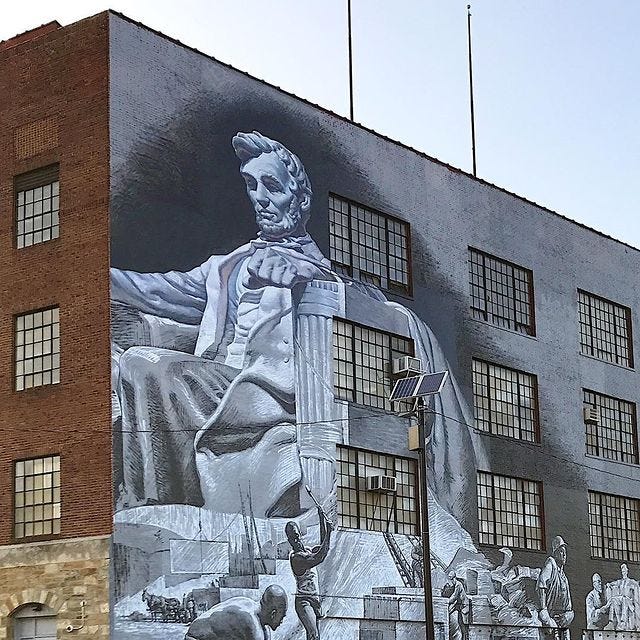Why I photograph political street art

My first street art scoop came when I photographed what’s believed to be the first recorded act of vandalism on Donald Trump’s star on the Hollywood Walk of Fame after he announced his campaign.
It was September 10, 2015, and I was in California for the Republican debate a few days later. I stopped by Trump’s star because I was curious how tourists were interacting with it. The Hollywood Chamber of Commerce, which runs the Walk of Fame, had responded to calls for the removal of Trump and Bill Cosby’s stars earlier that year by saying they don’t remove stars under any circumstances.
When I got to Trump’s star, located just north of Hollywood Blvd. near Kevin Spacey’s, there was a yellow X drawn through it. It was faint enough I wouldn’t have thought much of it if it wasn’t on the star of a presidential candidate. I snapped a photo and posted it online. It got 35 likes on Instagram and 33 retweets on Twitter and was picked up by the Hollywood Reporter. Since then the star has become a reoccuring site of vandalism and political expression.
Street art sighting began as a hobby, but today it feels like a calling. I shot street art whenever I came across it and I started seeing more and more of it. Readers have sent in their sightings from across the country and around the world. I believe we’re living through a golden age of political art, but it usually only makes the news if it’s something big like a hijacked billboard or a giant baby Trump balloon. I wanted to cover the era more fully, documenting its images and discovering its artists.
I like to spend time scouting D.C.’s street art-heavy neighborhoods on the weekend when I can.
I’ve shot in New York City…
Los Angeles…
Phoenix…
Salt Lake City…
Miami…
rural Pennsylvania…
and the U.S.-Mexico border.
My camera roll is filled with art.
Street art is just one component of our political visual rhetoric — or the messages that politicians, artists, and activists share through images. While politicians push images that portray themselves in a favorable light, street artists can use their work to be critical and do so despite the legal risks associated with vandalism.
Street art is out in public and it competes for our attention with paid advertising, so its message has to be clear, concise, and bold. You can tear it down or write on it if you want to. It’s indie and rebellious. While the mainstream art world can sometimes feel intimidating or pretentious, street art is for the people.










